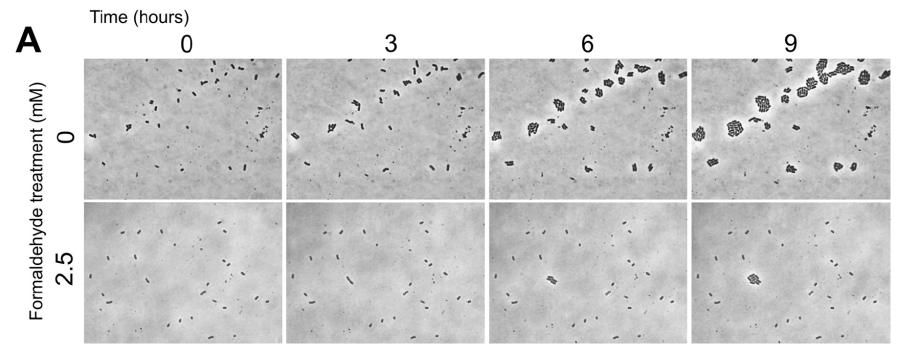Yup, I really wrote that. In a lab so strongly influenced by Darwin, I just invoked the name of Lamarck, who is often framed as the anti-Darwin. In no way am I defending any aspect of Lamarck’s support of the “Great chain of being” to describe the (super)natural progression of organisms through time. Rather, I am invoking the evolution based upon acquired phenotypes. This has been rightly dismissed as being able to describe any broad timescale of evolution, but what about the potential role for epigenetics? Might anything here be considered evolution?
Late in 2019, a paper from our lab championed by Jessica Lee and co-first author Siavash Riazi describes how Jessica discovered that phenotypic variation can permit a population of Methylobacterium extorquens to survive an otherwise lethal formaldehyde stress (PLOS Genetics, 2019. 15:e1008458).
Jessica found that the rare survivors were phenotypic variants (no mutations anywhere), supported by several methods including excellent video microscopy data (below) from Shahla Nemati in the lab of Andreas Vasdekis here at University of Idaho (who recently was promoted to Associate Professor in Physics, woo hoo!). Rather than having a population of discrete populations of highly tolerant and weakly tolerant cells (akin to antibiotic persistence), Jessica found that the concentration that cells could survive was a wide, dynamic continuum.

Siavash led our effort to model how this distribution of tolerance changes in different environments in terms of growth, death, and transitioning across a continuous scale of formaldehyde tolerance. Working with co-advisor Chris Remien, Ben Ridenhour, Jessica, and myself, he was able to develop a simple PDE that allows us to conclude, amongst other things, that formaldehyde tolerance is inherited over a large number of generations. Finally, Jessica and Jannell Bazurto analyzed RNA-Seq data to determine that these phenotypically tolerant cells have a distinct transcriptome from either low tolerant cells or the immediate stress response of low tolerance cells to formaldehyde exposure.
All told, we observe selection upon phenotypes that show a fair amount of phenotypic inheritance: all the ingredients that define evolution. No allele changes were observed, but the distribution of inherited phenotypes did change. As a visual metaphor, I discussed this scenario with visual artist Cody Muir, who was at IIDS, and this resulted in a fun visual that mixes seeing only some colonies grow with the Lamarckian metaphor of the giraffe’s neck:

Moving forward, we look forward to uncovering the physiological basis of phenotypic heterogeneity/inheritance, as well as beginning to look at how Lamarckian and Darwinian processes can jointly influence evolutionary outcomes.
